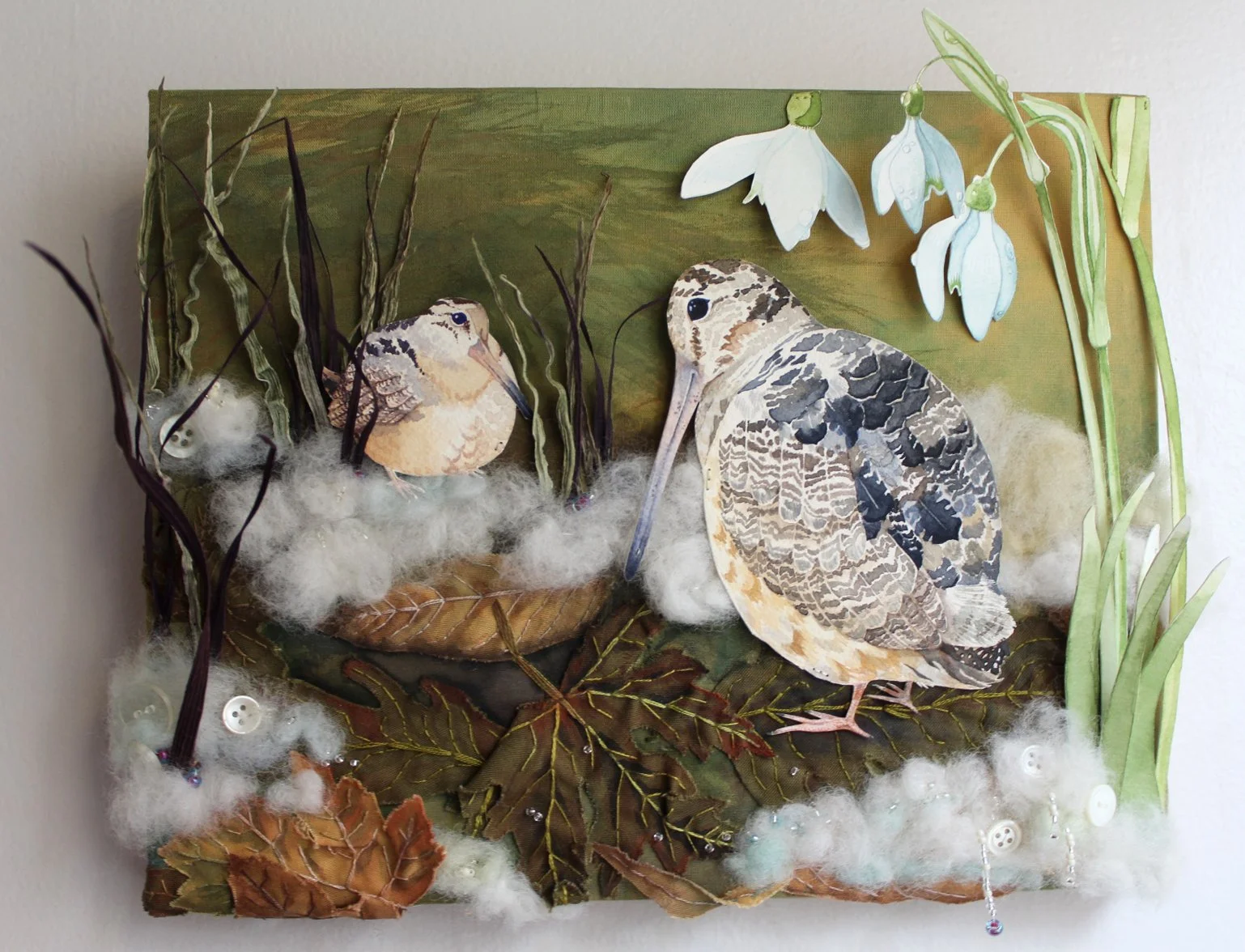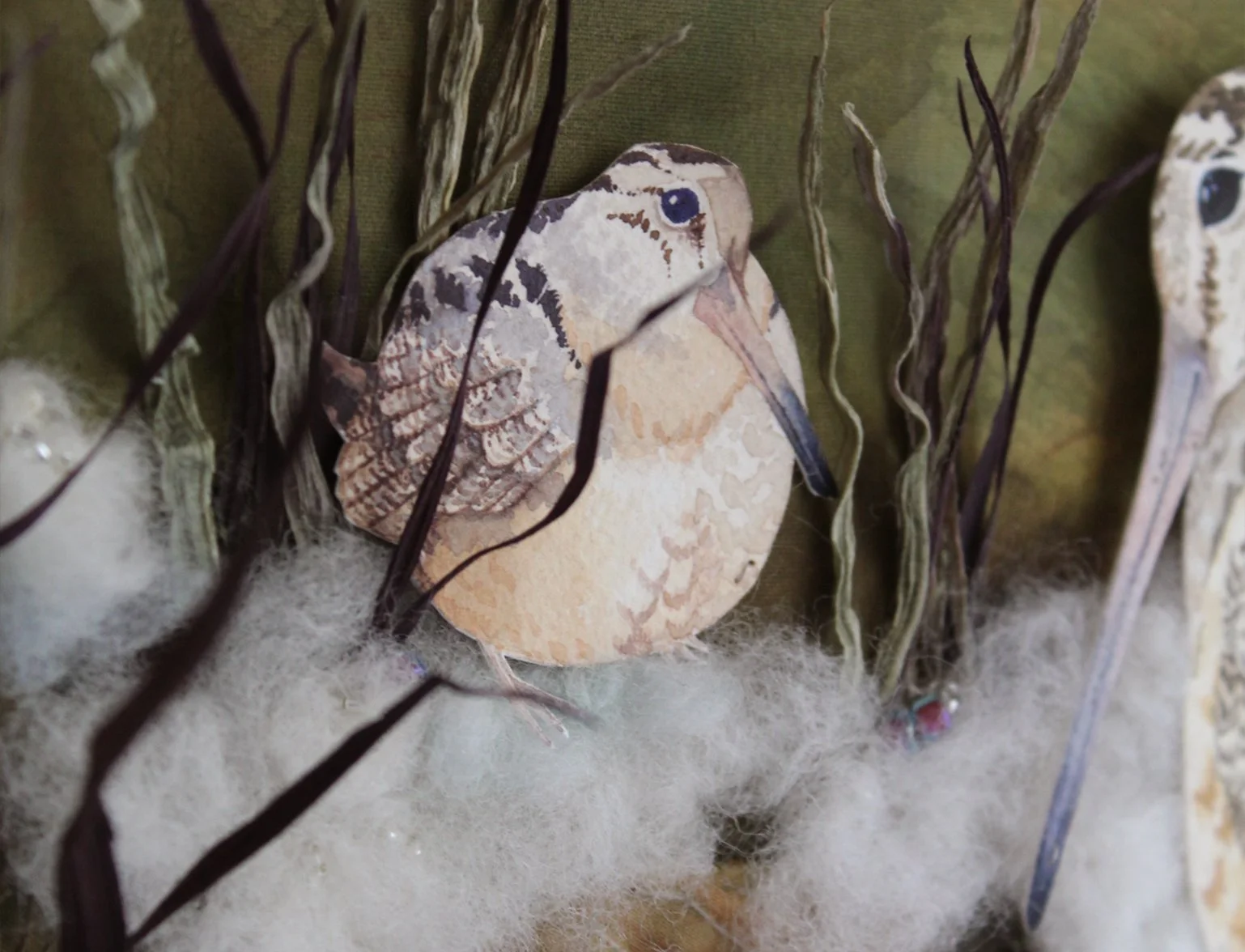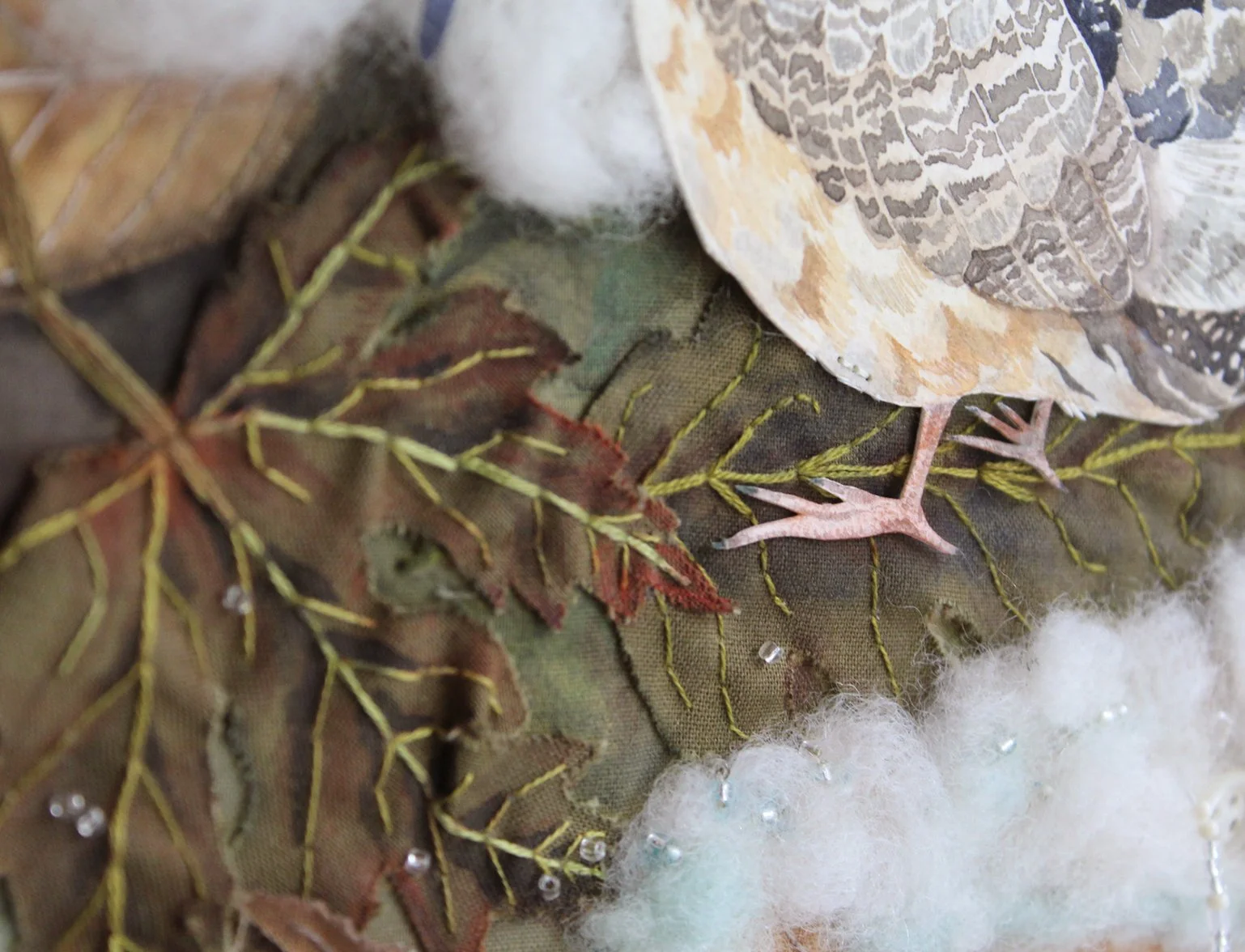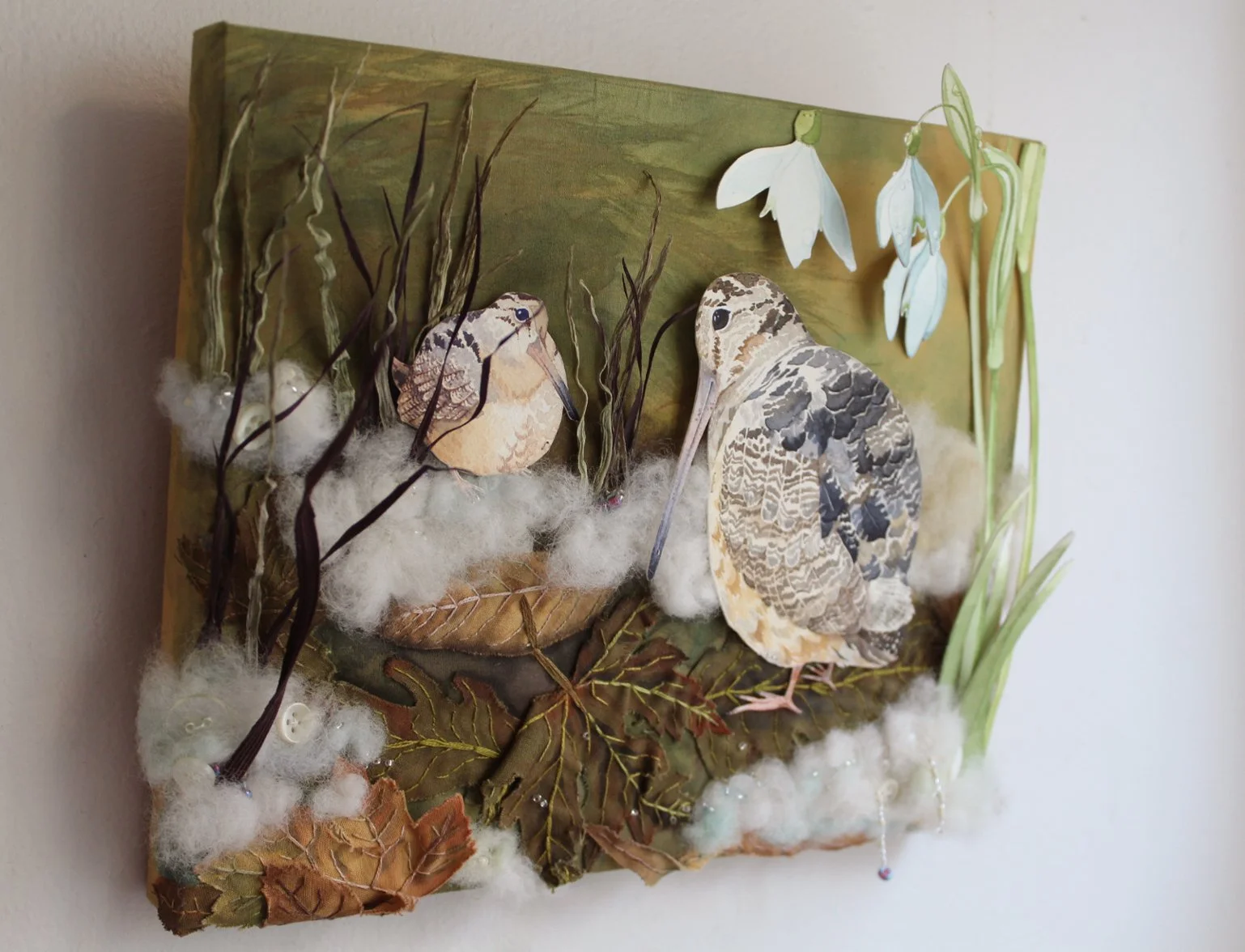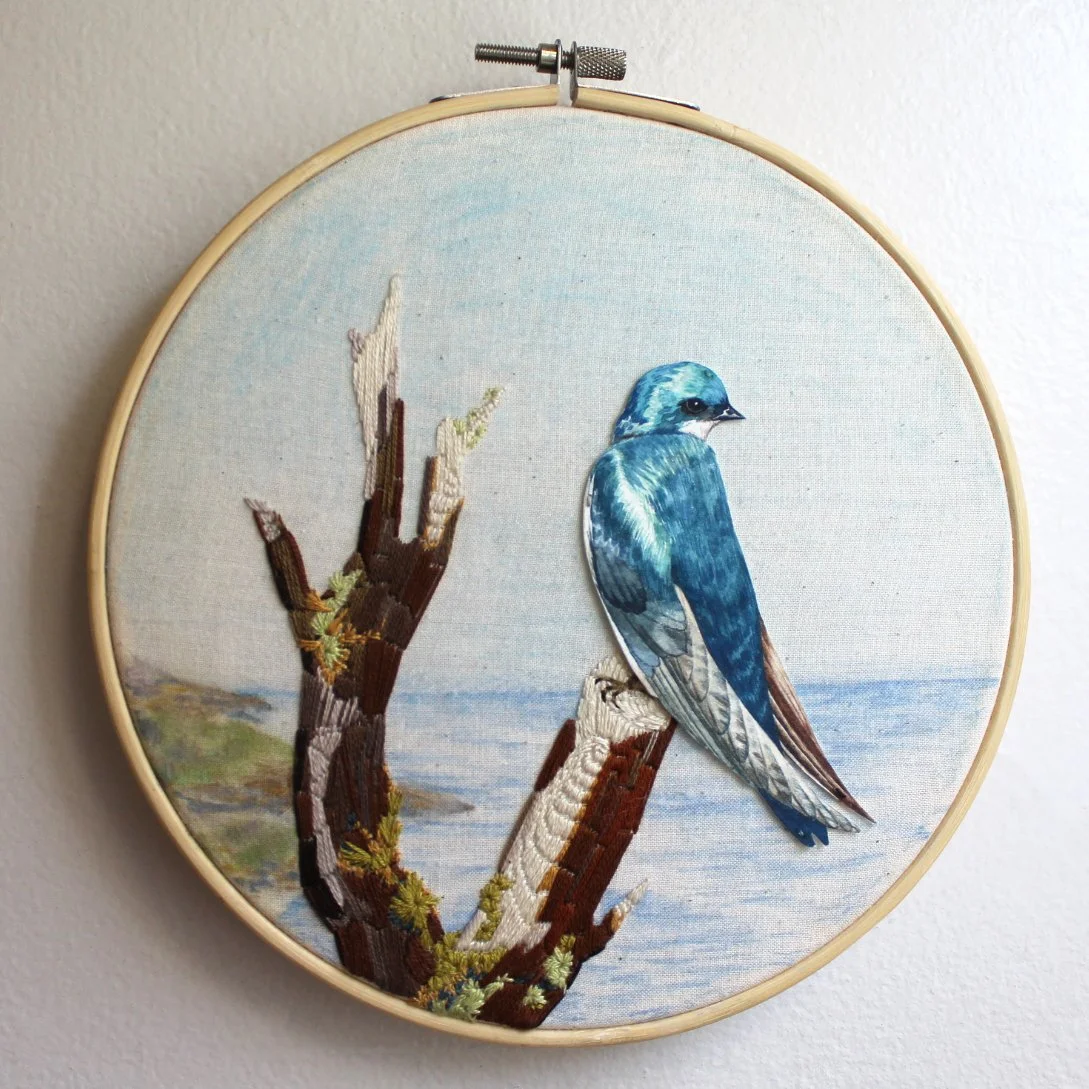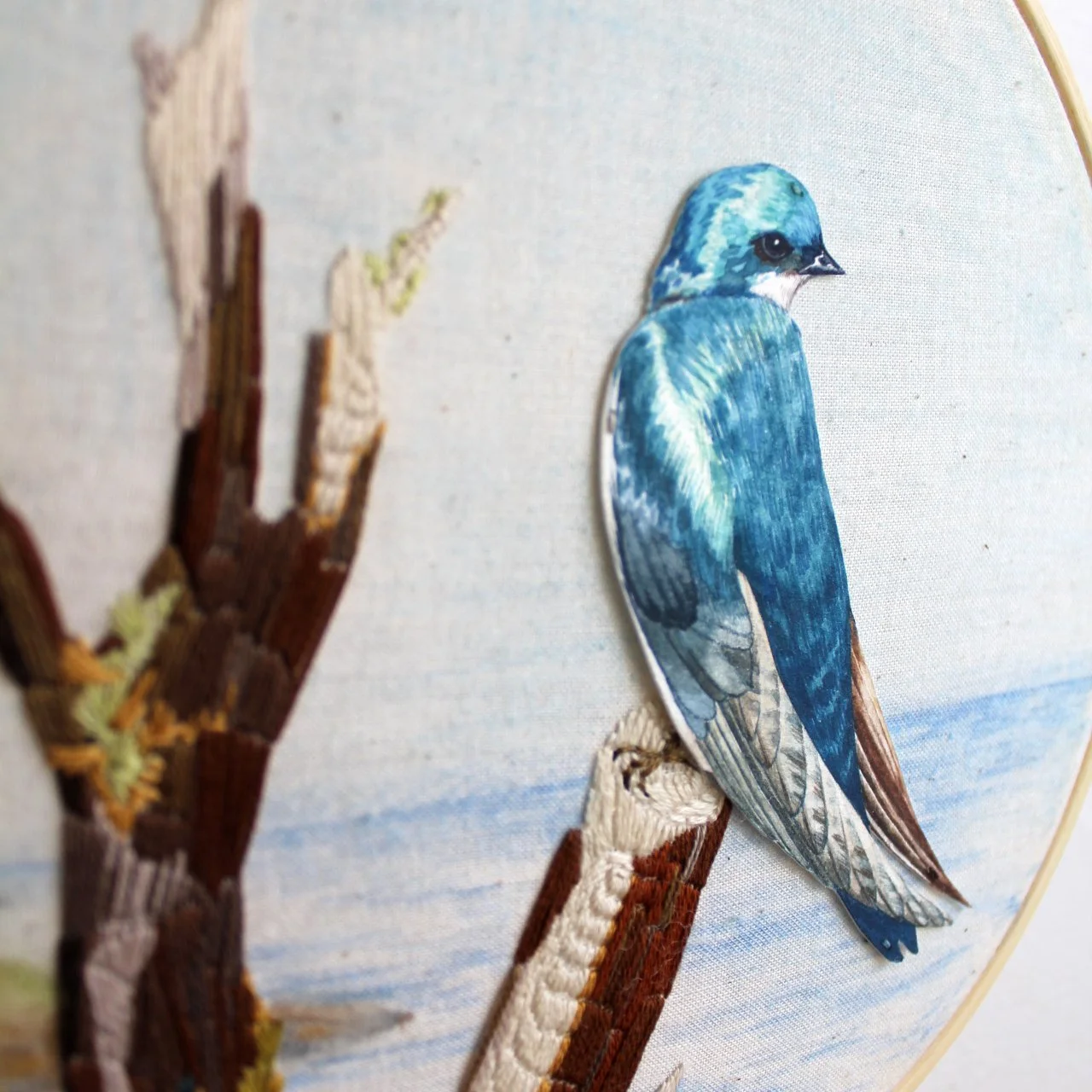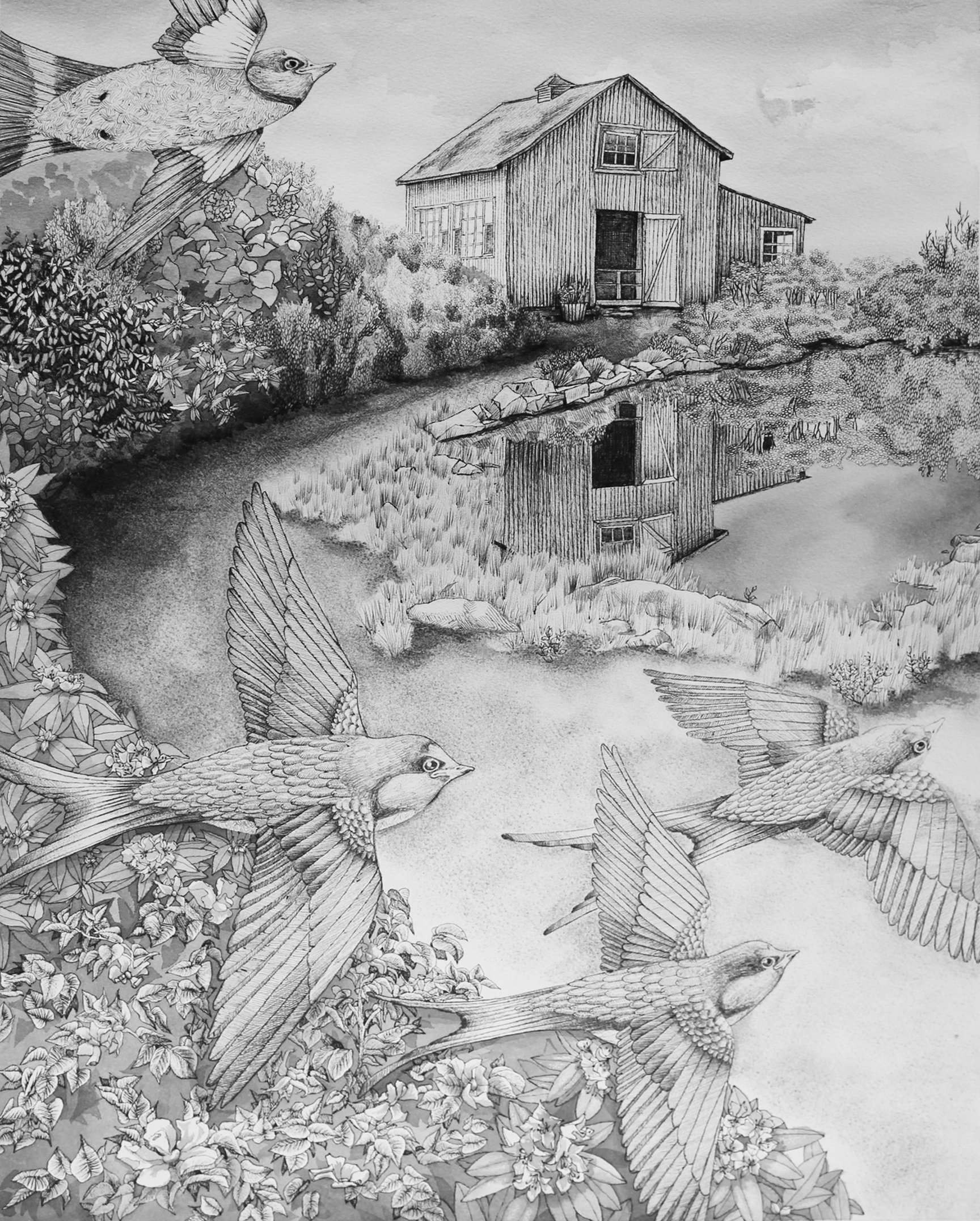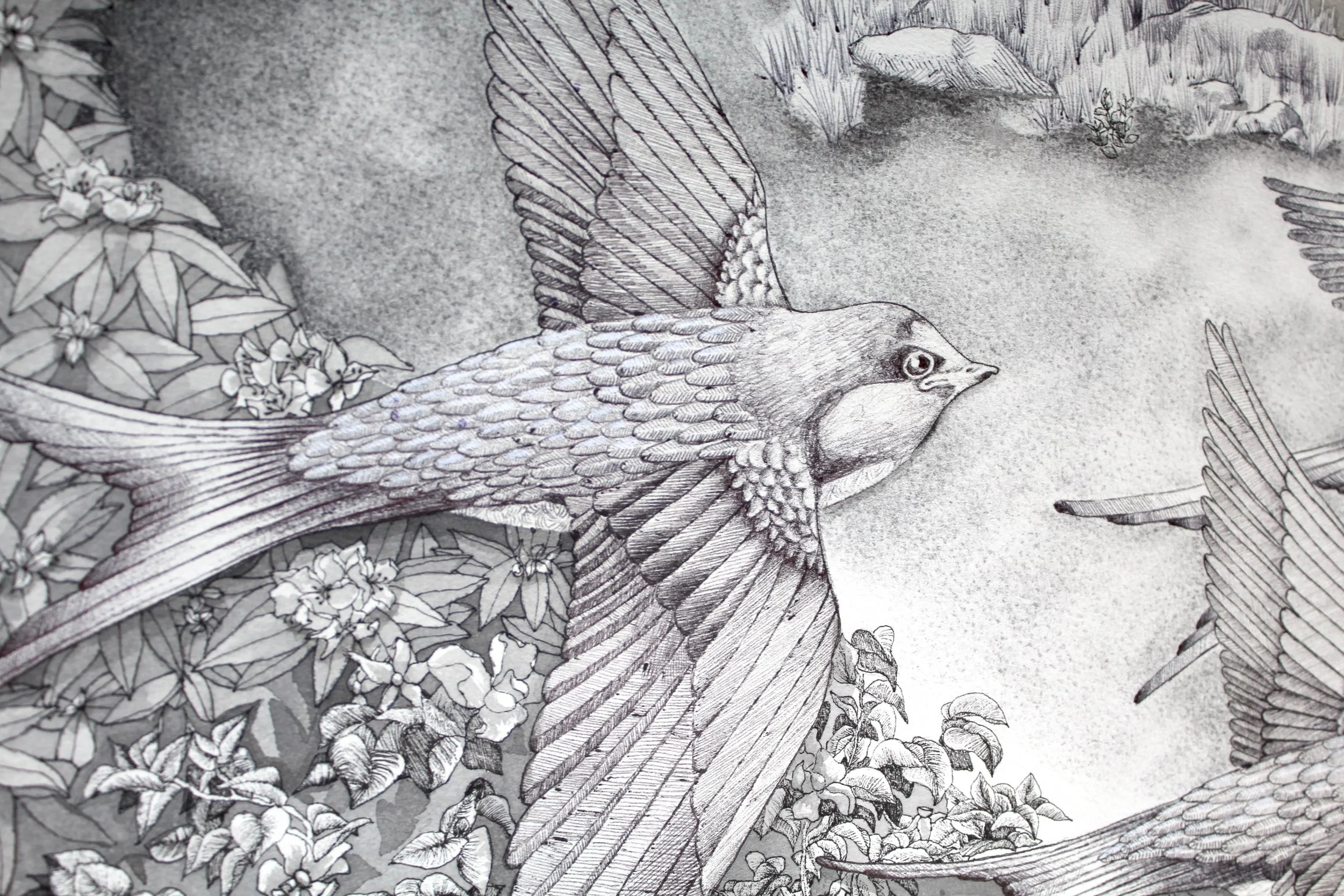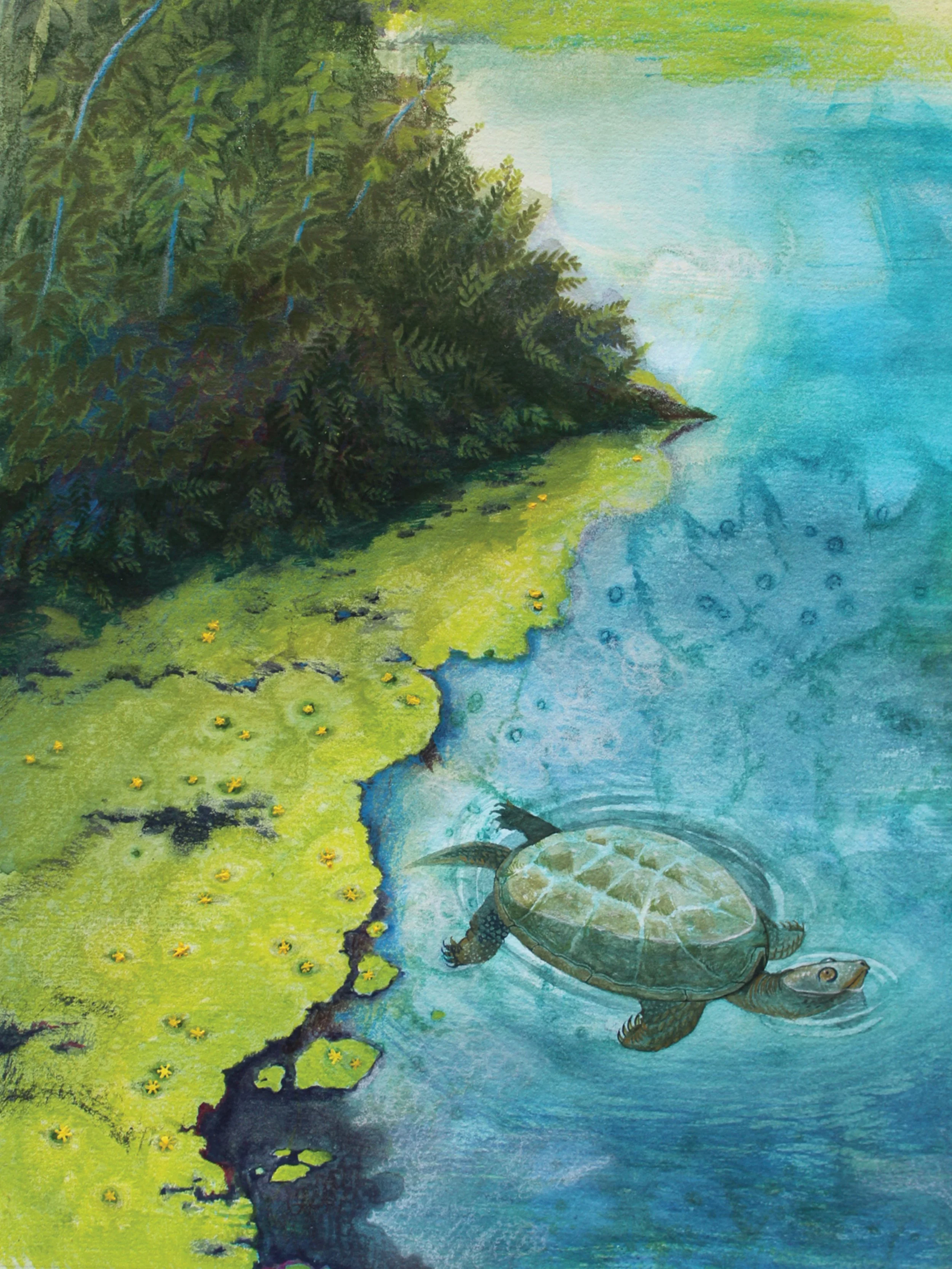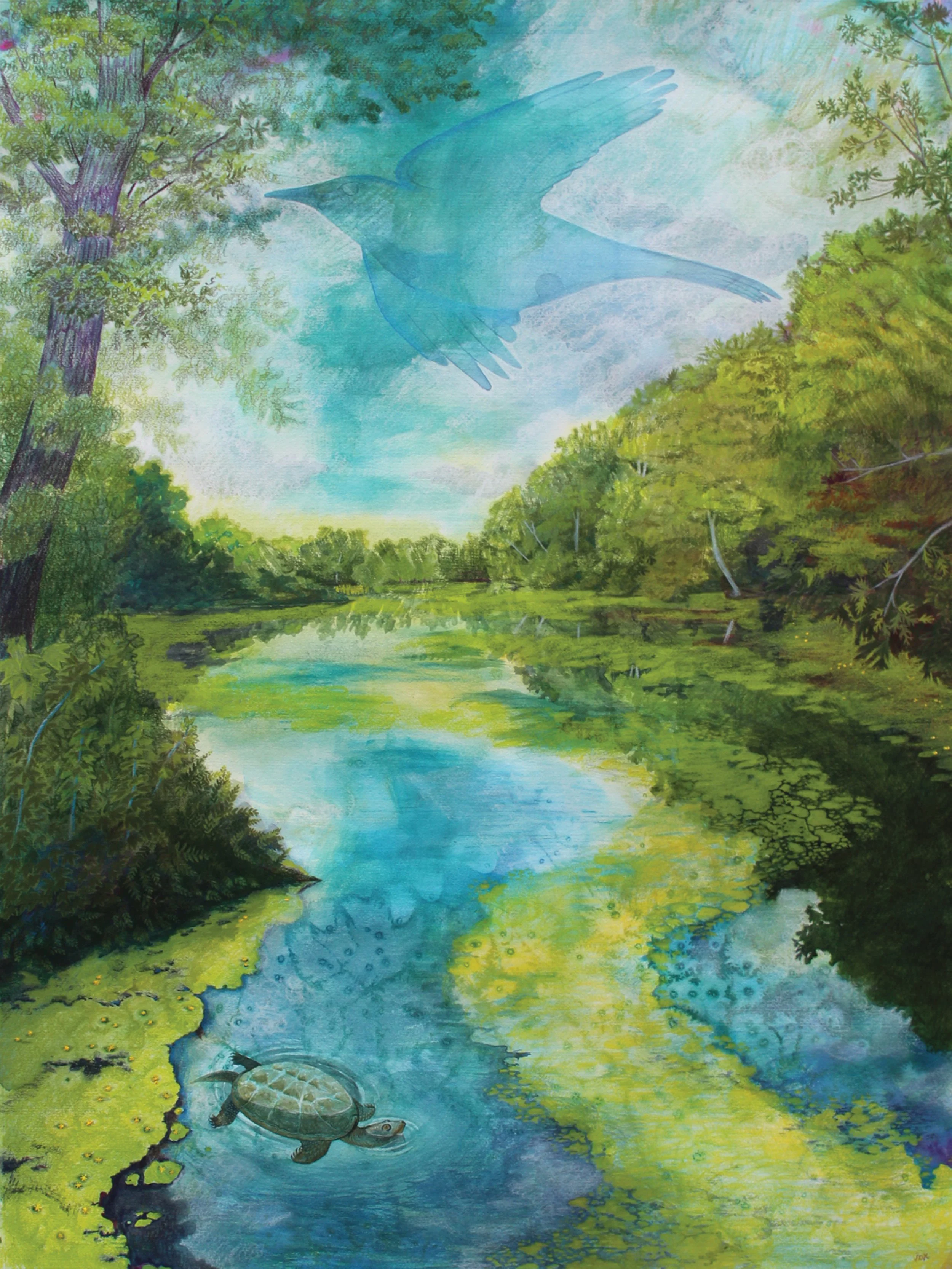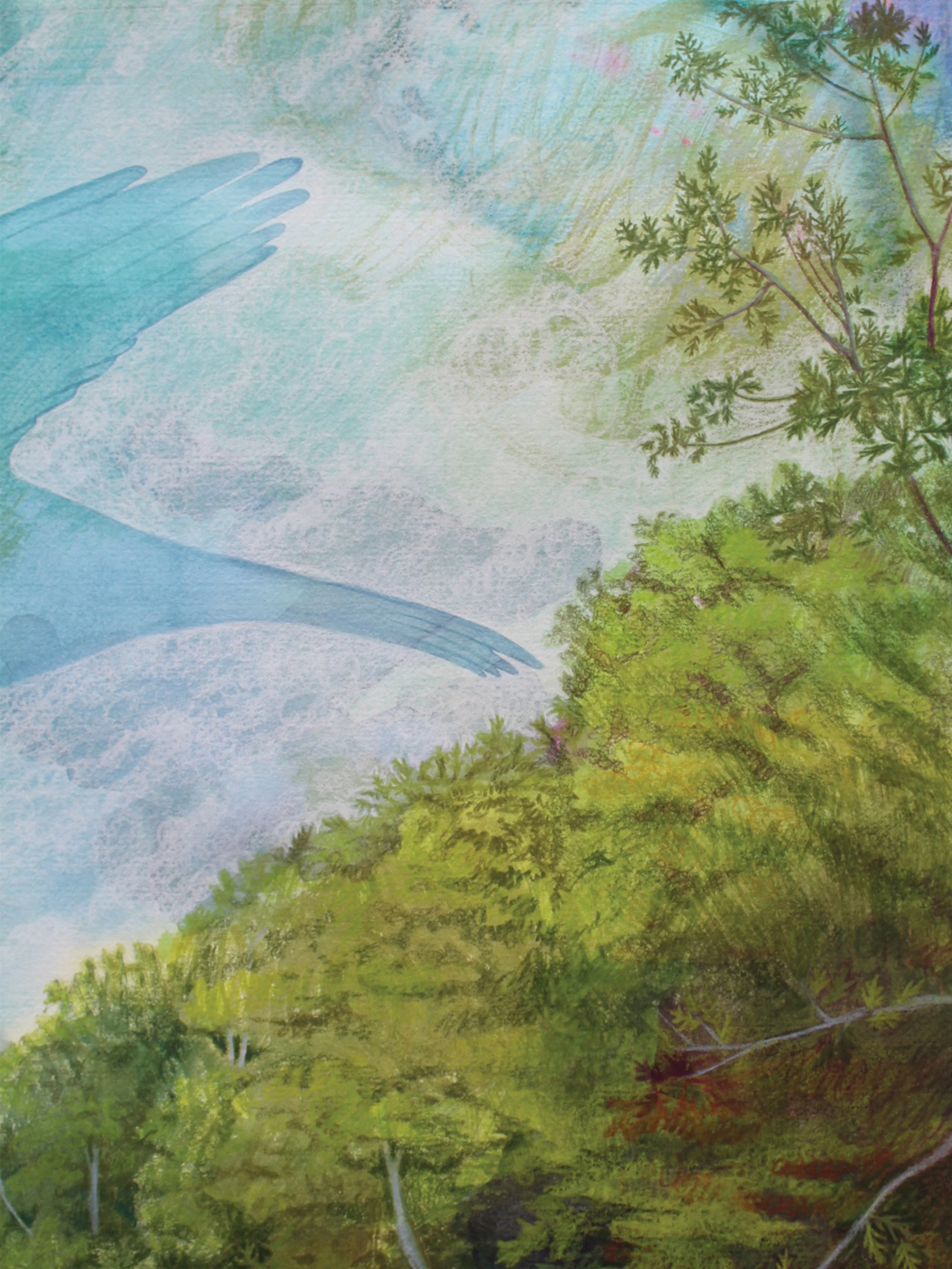Nesting Ground
This multi-media work explores perceptions of belonging through imagery of natural and cultural rituals, traditions, and annual cycles. Reflecting my religious background, my works honor the interdependent web of all existence and allow space for multiple ways of identifying with a place. Birds feature heavily as a visual metaphor for belonging and home; while free to roam, ecological, biological, and social ties tether them to a region, a neighborhood, a particular tree hollow or stream. As domestic and global conflicts rage on; what does it mean to hold strongly to a sense of belonging and place?
American Woodcock at Alewife Brook, 2025
Watercolor on paper and cotton, acrylic on cotton, plastic and mother of pearl buttons, glass beads, natural and synthetic embroidery floss, corn husks. 8x10"
Living next to the Alewife Brook Reservation, part urban wild and part Olmsted-designed park, leads to tons of wildlife sightings, including merganser ducks, bald eagles, and barred owls. Also nesting at Alewife are small numbers of American Woodcocks, a.k.a timberdoodles, an absolute delight of a uniquely-shapen bird. A local birding group hosts "Woodcock Walks," but they always sell out before I can join. I've never spotted a timberdoodle on my own.
Star Island Tree Swallow, 2024
Cotton embroidery floss, watercolor on paper, watercolor pencil on cotton. 7x7"
A Spirit’s Home, 2019
Ink, charcoal on paper. 18x24”
Many summers since the early 2010s, I’ve spent a week on the migratory bird hub of Star Island, located in the Isles of Shoals off the coast of New Hampshire. Bureaucratic reshuffling pushed my annual conference date around between June and July, so I’ve been able to observe the various points in the annual cycle of the island’s bird populations. During the nesting season, island staff recommend walking with a large stick for the great black-backed gulls to attack instead of your head. In contrast, many of the island’s population of tree swallows and barn swallows nest right in the eaves of the high-traffic front porch. One can only really observe the swallows this closely when they’re sleeping next to their nests at night; otherwise, they’re mostly swooping around at hyper-speed, avoiding humans, and nearly impossible to photograph except through my trusty monocular.
Eastern Meadowlark over Scarboro Pond, 2025
Watercolor, colored pencil, gouache. 18x24"
Scarboro Pond is at the center of Franklin Park, a vast urban green space located in the geographical center of Boston and serving the diverse communities of Roxbury, Dorchester, Jamaica Plain, Mattapan, and Roslindale, neighborhoods facing gentrification and institutional neglect. When crossing the bridge at Scarboro Pond, many large snapping and box turtles come to greet you, having been trained to wait for snacks thrown off the bridge. The Eastern Meadowlark has been spotted at Franklin Park, but their regional population is in steep decline due to disappearing habitat. As beloved and important as Franklin Park may be, open space competes with a golf course, stadium, zoo, and other structures, placing wildlife and human activity in close proximity and altering the behaviors of each.

